Kyoto, a city steeped in rich history and culture, offers a unique blend of ancient temples, stunning natural landscapes, and immersive cultural experiences. For travelers seeking a deep connection with Japanese traditions, Kyoto provides endless opportunities to explore its captivating beauty. Whether you’re strolling through peaceful bamboo groves or indulging in authentic local cuisine, there’s always something new to discover in this enchanting city. If you’re planning a visit, here are the top 15 things to do in Kyoto that you should not miss.
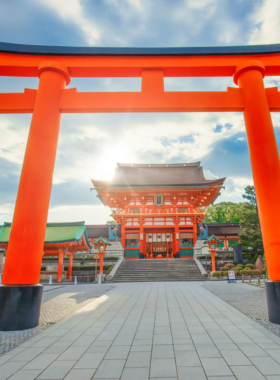
Fushimi Inari Shrine
Address: 68 Fukakusa Yabunouchicho, Fushimi Ward
| Type | Free, Churches/Religious Sites |
| Time to Spend | 2 hours to Half Day |
History and Significance: Fushimi Inari Shrine, established in the 8th century, is dedicated to Inari, the Shinto god of rice and agriculture. The thousands of red torii gates symbolize a path to spiritual enlightenment. It is one of Kyoto’s oldest and most important shrines, reflecting Japan’s deep Shinto traditions.
What to Expect: Visitors will be mesmerized by the towering red torii gates forming a pathway up Mount Inari. The spiritual ambiance, especially in the morning and evening, offers a serene experience, with opportunities to explore smaller shrines along the way.
Visitor Information: Open daily with no entrance fee. The hike to the top of Mount Inari can take 2-3 hours. Wear comfortable shoes and be prepared for a moderate climb. Early mornings or late afternoons offer a quieter experience.
Fushimi Inari Shrine, a UNESCO World Heritage site, is one of Kyoto’s most iconic landmarks. Located in the southern part of the city, this shrine is famous for its thousands of red torii gates that form a mesmerizing pathway up the Mount Inari. Dedicated to Inari, the Shinto god of rice and agriculture, the shrine attracts visitors with its spiritual aura. While the hike up the mountain can be a bit challenging, the view and serene atmosphere make it well worth the effort, especially during early mornings or evenings when the crowds are sparse.

Kiyomizu-dera Temple
Address: Higashiyama Ward
| Type | Churches/Religious Sites |
| Time to Spend | 2 hours to Half Day |
History and Significance: Established in the late 8th century, Kiyomizu-dera is one of Kyoto’s most famous Buddhist temples. The name “Kiyomizu” means “pure water,” referring to the Otowa Waterfall. The temple is a UNESCO World Heritage site and represents the grandeur of Japanese wooden architecture.
What to Expect: The vast wooden stage offers panoramic views of Kyoto, particularly beautiful in spring and autumn. You can also visit the Otowa Waterfall, where you can make a wish for love, health, or academic success.
Visitor Information: Open daily with an entrance fee. It can be busy during peak tourist seasons. Visitors can explore nearby Jishu Shrine, dedicated to the god of love, and take part in the temple’s cultural offerings.
Kiyomizu-dera Temple, perched on a hilltop in eastern Kyoto, is known for its breathtaking views and stunning architecture. The temple’s main building features a massive wooden stage that offers sweeping panoramas of the surrounding landscape. During spring and fall, the scenery is particularly enchanting with cherry blossoms and colorful foliage. Visitors can also experience the Otowa Waterfall, believed to bring blessings for love, health, and academic success. Don’t forget to explore the nearby Jishu Shrine, dedicated to the god of love.
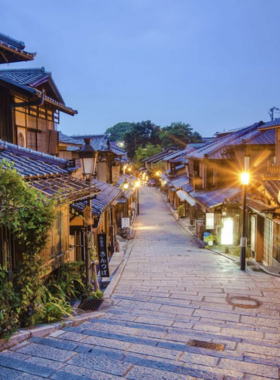
Gion District
Address: Gion
| Type | Free, Neighborhood/Area |
| Time to Spend | 2 hours to Half Day |
History and Significance: Gion, Kyoto’s historic geisha district, dates back to the 9th century. Known for its traditional tea houses, it remains a hub for preserving the culture of geishas and traditional Japanese arts, with many buildings designated as historical landmarks.
What to Expect: Walking through Gion feels like stepping back in time, with narrow streets lined with wooden houses, tea rooms, and the chance to spot geishas in their colorful kimonos. The Gion Corner theatre offers cultural performances.
Visitor Information: Free to explore, though the best times to spot geishas are in the evening. Be respectful when taking photos. You can also visit nearby Yasaka Shrine and enjoy the annual Gion Matsuri festival in July.
Gion, Kyoto’s historic geisha district, is a must-visit for those looking to step back in time. With its traditional tea houses, wooden ryokan, and charming narrow streets, Gion retains the atmosphere of old Kyoto. The highlight, however, is the chance to spot geishas, who walk gracefully between tea houses, dressed in beautiful kimonos. While visiting Gion, be sure to learn about the fascinating culture of geishas and their role in Japanese society. You might even get the chance to witness a performance at the Gion Corner theatre.
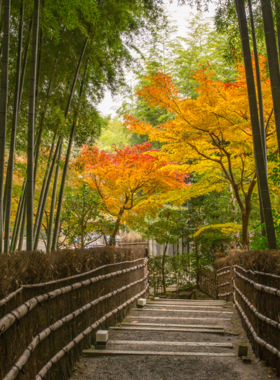
Arashiyama Bamboo Grove
Address: Sagaogurayama Tabuchiyamacho, Ukyo Ward, Kyoto, 616-8394, Japan
| Type | Free, Neighborhood/Area |
| Time to Spend | Half Day to Full Day |
History and Significance: Arashiyama Bamboo Grove has been a cultural icon for centuries, representing the harmony between nature and Japanese aesthetics. It’s located in the Arashiyama area, known for its lush landscapes and the historical presence of temples and villas.
What to Expect: The grove offers a peaceful walk through towering bamboo stalks. Nearby, you can explore Okochi Sanso Villa, enjoy scenic views, and experience the natural beauty of Arashiyama, perfect for photography and reflection.
Visitor Information: Open daily, free of charge. It can be crowded during peak tourist seasons, so visiting early in the morning or late in the afternoon is ideal. You can also rent bicycles or boats in the area.
Arashiyama, located on the western edge of Kyoto, is a picturesque neighborhood known for its natural beauty. The Arashiyama Bamboo Grove is one of the most serene places to visit, where you can walk through towering bamboo stalks that sway in the breeze. While there, take a moment to explore the nearby Okochi Sanso Villa, a former residence of a Japanese actor, where you can enjoy the tranquil gardens and a cup of matcha tea. The area is also perfect for cycling or paddle boating, offering a peaceful escape from the city’s hustle.
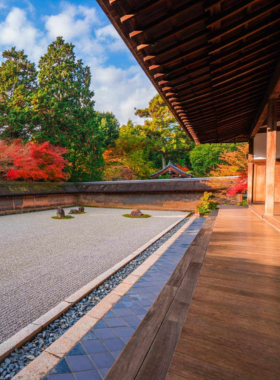
Ryoanji Temple
Address: Ryoanji Goryonoshitacho, Ukyo Ward
| Type | Churches/Religious Sites |
| Time to Spend | 1 to 2 hours |
History and Significance: Ryoanji, a Zen Buddhist temple built in the 15th century, is home to Japan’s most famous Zen rock garden. It represents the Zen principles of simplicity and meditation, with the garden’s 15 stones arranged in a way that encourages contemplation.
What to Expect: The main attraction is the Zen rock garden, where visitors can reflect on its meaning. The tranquil pond, beautiful walking paths, and peaceful environment make Ryoanji a place for contemplation and connection with nature.
Visitor Information: Open daily with an entrance fee. The temple is a quiet retreat, offering a peaceful environment ideal for meditation. The gardens are especially serene in the early morning or during autumn.
Ryoanji Temple is home to one of Japan’s most famous Zen rock gardens, a masterpiece that has captivated visitors for centuries. The garden, featuring 15 stones surrounded by white gravel, invites contemplation and reflection, with its meaning remaining a mystery to many. The temple’s serene atmosphere, along with its centuries-old pond and peaceful walking trails, makes it a place of calm. Recognized as a UNESCO World Heritage site, Ryoanji offers visitors an insight into the Zen Buddhist philosophy and an opportunity to experience tranquility.
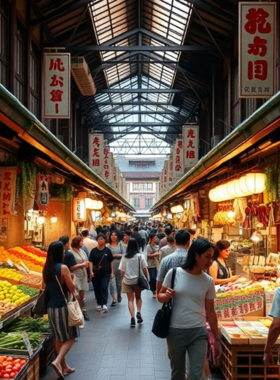
Nishiki Market
Address: Nishikikoji Dori
| Type | Free, Neighborhood/Area, Shopping |
| Time to Spend | 1 to 2 hours |
History and Significance: Nishiki Market, dating back to the 14th century, is known as “Kyoto’s Kitchen.” It has been a hub for local food production and distribution, offering fresh seafood, vegetables, and traditional Kyoto delicacies.
What to Expect: A sensory overload of food stalls offering a variety of local treats, from tofu skin (yuba) to matcha-flavored sweets. The market is perfect for food lovers looking to explore Kyoto’s culinary heritage.
Visitor Information: Open daily, though it can get crowded, particularly on weekends. The market is free to explore, and it’s recommended to try various food stalls for an authentic taste of Kyoto.
For food lovers, a visit to Nishiki Market is a must. Known as “Kyoto’s Kitchen,” this five-block-long market offers a wide range of Japanese delicacies, from fresh seafood to sweets and pickled vegetables. The market is perfect for sampling local treats like yuba (tofu skin), mochi, and green tea-based sweets. Even if you’re unfamiliar with Japanese cuisine, this vibrant market provides a sensory overload that will introduce you to Kyoto’s culinary culture. Don’t forget to explore the nearby streets, filled with shops offering traditional crafts and souvenirs.
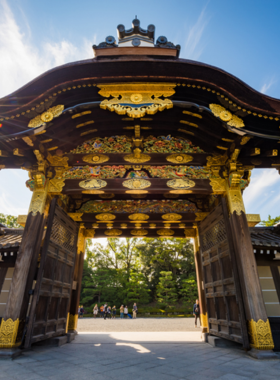
Nijo Castle
Address: Horikawa Nishi-iru, Nijo-dori, Nakagyo-ku
| Type | Castles/Palaces |
| Time to Spend | 1 to 2 hours |
History and Significance: Built in the early 1600s, Nijo Castle was the residence of Tokugawa Ieyasu, the first Tokugawa shogun. It symbolizes the power and grandeur of the Tokugawa shogunate and is a UNESCO World Heritage site.
What to Expect: Visitors can explore the castle’s lavish interiors, intricate woodwork, and stunning gardens. The “nightingale floors,” designed to chirp as a security measure, add to the historical allure of the castle.
Visitor Information: Open daily with an entrance fee. Allow a couple of hours to fully explore the castle and surrounding gardens. Guided tours are available to provide historical context.
Nijo Castle, built in the 17th century, was once the residence of Tokugawa Ieyasu, the first shogun of the Tokugawa era. This stunning structure is renowned for its beautiful gardens, ornate interiors, and historical significance. The castle is also famous for its “nightingale floors,” which chirp when walked upon, serving as a security measure against intruders. Visitors can explore the grand rooms, intricate woodwork, and the surrounding gardens, all while learning about the history of the Tokugawa shogunate and its impact on Japan.

Kinkaku-ji (Golden Pavilion)
Address: 1 Kinkakujicho, Kita Ward
| Type | Castles/Palaces, Churches/Religious Sites |
| Time to Spend | Less than 1 hour |
History and Significance: Kinkaku-ji, also known as the Golden Pavilion, was originally constructed in the 14th century as a retirement villa for Shogun Ashikaga Yoshimitsu. The temple’s gleaming gold leaf symbolizes the beauty and impermanence of life.
What to Expect: The temple’s golden exterior is a breathtaking sight, especially when reflected in the pond. The surrounding gardens and tea garden also enhance the serene atmosphere, making Kinkaku-ji a peaceful spot for reflection.
Visitor Information: Open daily with an entrance fee. The temple can get crowded, so visiting early in the morning is recommended. The surrounding gardens are also worth exploring.
Kinkaku-ji, also known as the Golden Pavilion, is one of Kyoto’s most photographed landmarks. This Zen Buddhist temple is covered in gold leaf, making it a striking sight against the backdrop of lush greenery and a tranquil pond. The temple’s gardens are equally impressive, featuring traditional Japanese landscaping and a beautiful tea garden. Kinkaku-ji is a place of serenity and beauty, offering visitors a chance to reflect on the deeper aspects of life and nature while soaking in its stunning surroundings.
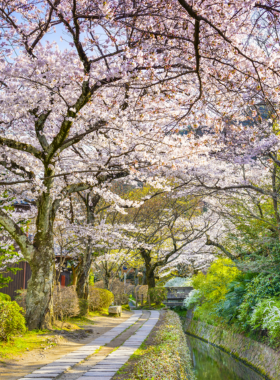
Philosopher’s Path
Address: Sakyo Ward
| Type | Free, Parks and Gardens, Sightseeing |
| Time to Spend | 1 to 2 hours |
History and Significance: The Philosopher’s Path follows the Kamogawa River and is named after philosopher Nishida Kitaro, who is said to have walked here daily in meditation. It represents the connection between philosophy, nature, and spiritual reflection.
What to Expect: A serene walk through cherry blossom-lined paths, small temples, and quiet gardens. It’s a peaceful escape where visitors can reflect and enjoy nature, particularly during the cherry blossom season.
Visitor Information: Open daily, free of charge. It’s best to visit during spring for cherry blossoms, though the path offers beauty year-round. Small cafes along the way provide a nice place to rest.
The Philosopher’s Path is a scenic walking trail that runs along the Kamogawa River in eastern Kyoto. This path is particularly popular during the cherry blossom season, when the trees lining the trail are in full bloom, creating a magical atmosphere. Along the way, visitors can stop at small temples, cafes, and gardens. It’s a peaceful place for reflection, offering both natural beauty and a sense of calm that invites contemplation. The path is named after the philosopher Nishida Kitaro, who is said to have walked it regularly while meditating.

To-ji Temple
Address: 1 Kujocho, Minami Ward, Kyoto, 601-8473, Japan
| Type | Churches/Religious Sites, Sightseeing |
| Time to Spend | 2 hours to Half Day |
History and Significance: Founded in the 9th century, To-ji Temple is known for its towering five-story pagoda, Japan’s tallest wooden structure. The temple has long been a center for Buddhist teachings and is also home to many historical statues.
What to Expect: The impressive pagoda and surrounding grounds offer a peaceful environment to explore. The monthly flea market, Kōbō-san, adds a lively local touch, where visitors can shop for antiques and traditional crafts.
Visitor Information: Open daily, with an entrance fee. The flea market is held on the 21st of each month. Take time to explore the temple’s beautiful statues and gardens.
To-ji Temple, one of Kyoto’s oldest and most significant temples, is home to Japan’s tallest wooden pagoda. The temple, founded in the 9th century, is known for its impressive architecture and serene atmosphere. Visitors can explore the temple grounds, which are dotted with historical statues and beautiful gardens. To-ji is also famous for its monthly flea market, known as Kōbō-san, where you can find antiques, traditional crafts, and local delicacies. A visit to To-ji offers a glimpse into Kyoto’s religious and cultural heritage.
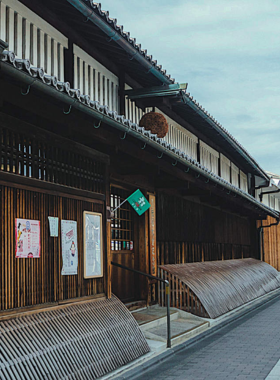
Fushimi Sake District
Address: 82番2 Hiranocho, Fushimi Ward, Kyoto, 612-8057, Japan
| Type | Tours, Breweries |
| Time to Spend | Half Day |
History and Significance: Fushimi has been a sake brewing center for over 1,000 years, thanks to its pure water sources and favorable climate. The district remains an important part of Japan’s sake heritage and production.
What to Expect: Visitors can explore sake breweries, learn about the brewing process, and taste a variety of sake. The area offers a deeper look into Japanese culture and the centuries-old tradition of sake production.
Visitor Information: Sake brewery tours are available, and some offer tastings. The district is accessible by public transport, and many breweries have souvenir shops where you can purchase sake to take home.
The Fushimi district in southern Kyoto is famous for its sake production, thanks to its pure water and ideal climate. A visit to this area allows you to explore sake breweries and learn about the brewing process. Many breweries offer tours and tastings, where you can sample a variety of sake and purchase bottles to take home. Fushimi is a great place for those interested in Japanese culture and its centuries-old tradition of sake brewing.
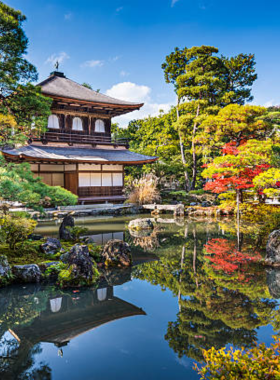
Ginkaku-ji (Silver Pavilion)
Address: 2 Ginkakujicho, Sakyo Ward
| Type | Castles/Palaces, Churches/Religious Sites |
| Time to Spend | 1 to 2 hours |
History and Significance: Ginkaku-ji, also known as the Silver Pavilion, was built in the 15th century as a retreat for Shogun Ashikaga Yoshimasa. Though it was never covered in silver, the simplicity of the structure and surrounding gardens embody Zen Buddhist ideals.
What to Expect: The Zen gardens, featuring a moss garden and a sand garden, create a peaceful atmosphere perfect for reflection. The Silver Pavilion offers tranquility in a beautifully designed setting.
Visitor Information: Open daily with an entrance fee. The gardens are best visited in the morning when it’s quieter. Visitors can explore the nearby Philosopher’s Path after visiting the temple.
Ginkaku-ji, or the Silver Pavilion, is a Zen Buddhist temple that offers a serene retreat from the hustle and bustle of Kyoto. Though it’s called the Silver Pavilion, it’s not actually covered in silver, but its simplicity and understated beauty make it a standout. The temple is surrounded by stunning gardens, including a moss garden and a sand garden, designed to evoke a sense of tranquility and peace. Ginkaku-ji is an ideal place for those seeking quiet reflection in a beautifully designed setting.
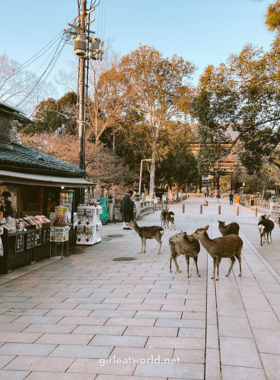
Nara Day Trip
Address: Kyoto, Japan
| Type | Tours |
| Time to Spend | 2 hours to Half Day |
History and Significance: Nara, Japan’s first permanent capital, is home to some of the country’s most significant historical sites, including Todai-ji Temple, housing a massive Buddha statue. Nara was also a center for cultural development and Buddhist teachings.
What to Expect: In addition to the famous Todai-ji Temple, visitors can enjoy Nara Park, where deer roam freely. The peaceful atmosphere, ancient temples, and historical sites offer an insightful day trip from Kyoto.
Visitor Information: Nara is accessible by a short train ride from Kyoto. It’s recommended to visit the temples and parks early to avoid crowds. The city’s relaxed pace makes it ideal for a day of exploration.
Nara, located just a short train ride from Kyoto, is home to some of Japan’s most famous temples and shrines. Nara Park, with its friendly, free-roaming deer, is a highlight, along with the Todai-ji Temple, which houses a massive bronze Buddha statue. The city’s peaceful atmosphere and historical significance make it a perfect day trip from Kyoto, offering a deeper insight into Japan’s ancient culture and spirituality.
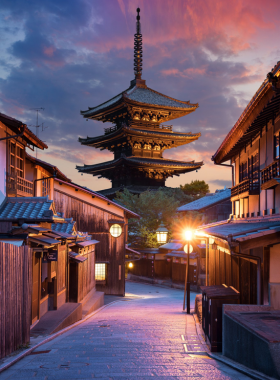
Yasaka Shrine
Address: 625 Gionmachi Kitagawa, Higashiyama Ward, Kyoto, 605-0073, Japan
| Type | Neighborhood area, Sightseeing, Gardens, Statues |
| Time to Spend | 2 hours to Half Day |
History and Significance: Yasaka Shrine, founded in the 7th century, is one of Kyoto’s most important Shinto shrines. It is dedicated to the gods of the human world and is famous for the annual Gion Matsuri festival, one of Japan’s largest festivals.
What to Expect: Visitors can explore the shrine’s grounds, with its vibrant red gates and tranquil gardens. The Gion Matsuri festival in July offers a lively and colorful cultural experience.
Visitor Information: Open daily with no entrance fee. The shrine is a great place to visit year-round, but the Gion Matsuri festival in July attracts large crowds. The shrine is located near Gion, so it’s easy to explore both in one visit.
Yasaka Shrine, located in the heart of Kyoto, is a popular destination for visitors seeking to experience traditional Japanese Shinto culture. The shrine is particularly famous for its vibrant red gates and the annual Gion Matsuri festival, one of Japan’s largest and most celebrated festivals. The shrine’s peaceful surroundings provide a perfect setting for reflection and prayer. Visitors can explore the grounds, which feature beautiful gardens, statues, and a large lantern that glows brightly in the evening.

Kyoto Imperial Palace
Address: Kyoto, Japan
| Type | Neighborhood areas, Gardens, Elegant pavilions |
| Time to Spend | 2 hours to Half Day |
History and Significance: The Kyoto Imperial Palace was the residence of Japan’s imperial family until the capital moved to Tokyo in the 19th century. The palace represents Japan’s royal history and the architectural styles of the time.
What to Expect: Visitors can explore the vast palace grounds, which include beautiful gardens, elegant pavilions, and tranquil ponds. The palace offers a glimpse into the lifestyle of the Japanese imperial family and the country’s royal heritage.
Visitor Information: Open daily with free admission. Guided tours are available to learn about the palace’s history and architecture. The gardens and surrounding areas are also worth exploring.
The Kyoto Imperial Palace, once the residence of Japan’s imperial family, offers a fascinating glimpse into the country’s royal history. The palace grounds are expansive, with beautiful gardens, elegant pavilions, and tranquil ponds. Visitors can tour the palace and its surrounding areas, learning about the imperial family’s lifestyle and the architectural traditions of the time. The Kyoto Imperial Palace is a perfect place for history enthusiasts and those interested in Japan’s royal past to explore the cultural heritage of the city.
